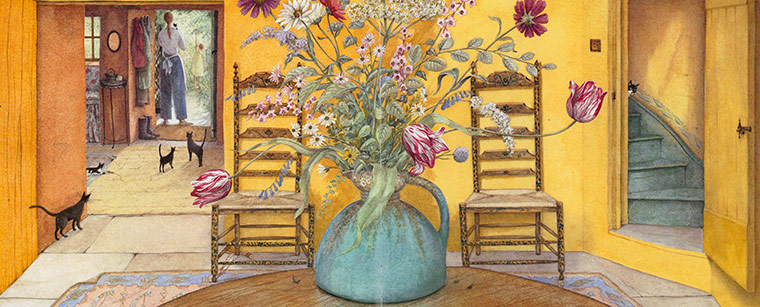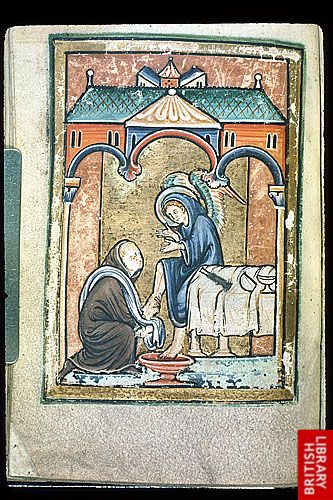
Children's illustrator Angela Barrett was featured in the Guardian's series A Life in Pictures last week (April 14, 2010). This gorgeous image, the first in the slideshow, is from The Hidden House by Martin Waddell (1990), now out of print. I picked up a copy at a library sale a couple of years ago and promptly fell in love with Barrett's mysterious and beautiful work. The story itself is about the passage of time; both poignant and a little strange, I love it, too.
Bruno the lonely doll-maker makes three dolls to keep him company in his house in the woods before he dies and leaves them to rot away. Years later the house is brought back to life by a new family. The glorious splash of yellow in this double-page spread breaks away from the sombre greens and greys of the early part of the story.
Not to mention the blue jug of flowers, which looks like something by de Heem; and in fact several of the images in this book have the carefully composed quality of a Dutch still life. We like to count the cats here (there are five--no, six of them, one of which has tangled a spool of thread around the legs of a chair) and imagine climbing the curving blue staircase behind the yellow door.
[I've missed books together this spring. I hope you have, too! In any case, it's good to be back.]




